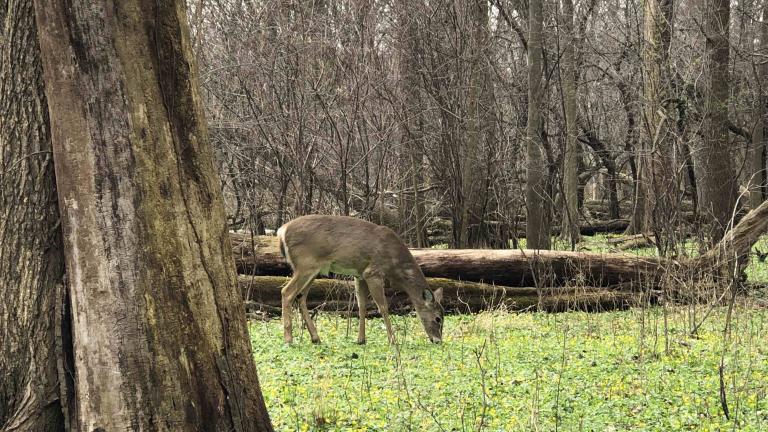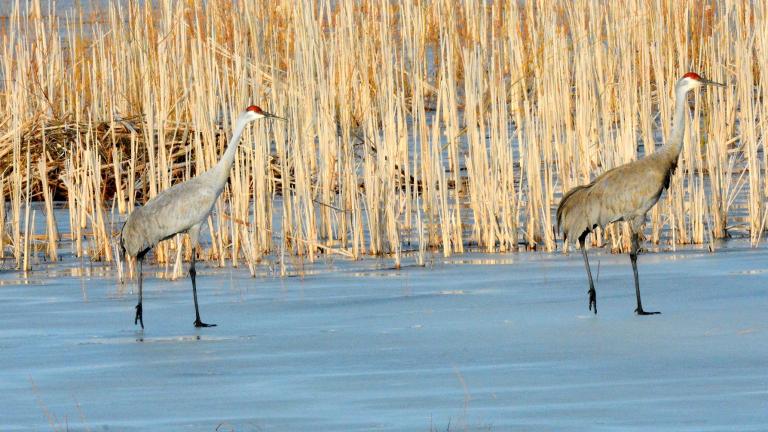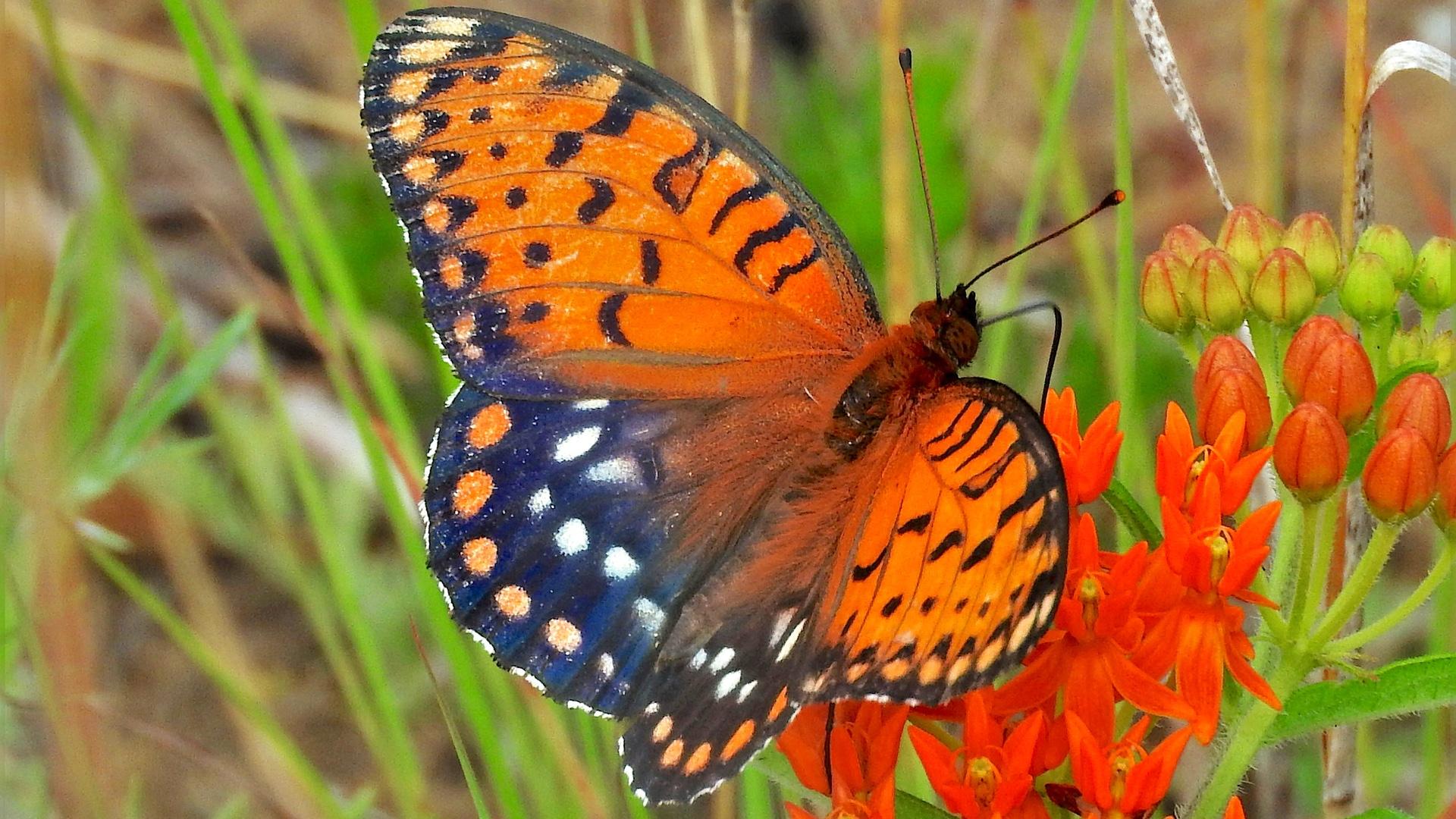 Regal fritillary butterfly. (Doug Taron)
Regal fritillary butterfly. (Doug Taron)
Between its beauty and awe-inspiring migratory journey, it’s not hard to see why, as insects go, the monarch butterfly is a rock star. In fact, to a lot of people, the monarch is the butterfly — the only one they could reliably name or pick out of a lineup.
So what better excuse than National Pollinator Week for us to introduce you to the regal fritillary.
Similar in size to the monarch, the regal is also a stunner in the looks department. The upper side of its bright orange-red forewings are dappled with black spots and its hind wings carry a built-in gender-reveal code: males have a row of orange dots, females have white.
What makes the regal of special interest to Chicagoans: it’s native to Illinois and other prairie regions of North America. And it’s fast disappearing.
The regal’s range once extended from Wyoming and Colorado all the way to the East Coast, south to Virginia and North Carolina and north up to Canada’s Maritime provinces.
Today, east of the Mississippi River, the regal has collapsed.
“There are a couple of populations in Wisconsin, a few in Illinois and a couple in Indiana, and then other than that, there is a single population each in Pennsylvania and Virginia. It’s been extirpated from the entire rest of its range east of the Mississippi,” said Doug Taron, curator of biology and vice president of research and conservation at the Peggy Notebaert Nature Museum.
“I grew up in Massachusetts. The last regal fritillary that I am aware of that was recorded in Massachusetts was I think sometime in the early 1980s,” Taron said. “And it hasn’t been seen there since then.”
The situation is dire enough that the regal has been proposed for inclusion on the endangered species list and is considered “threatened” throughout its remaining range.
The reason for this extirpation — which means a localized extinction — is fairly simple and can be summed up in a single word: development. There’s precious little prairie left for the regal to call home.
Whereas other species of butterflies, including the regal’s close relation, the great spangled fritillary, have found the suburbs to be a close enough approximation of their desired savanna habitat, the regal is choosier.
“They absolutely need acreage,” said Taron. “The regal fritillary is very much a prairie species, and so it needs the large expanses.”
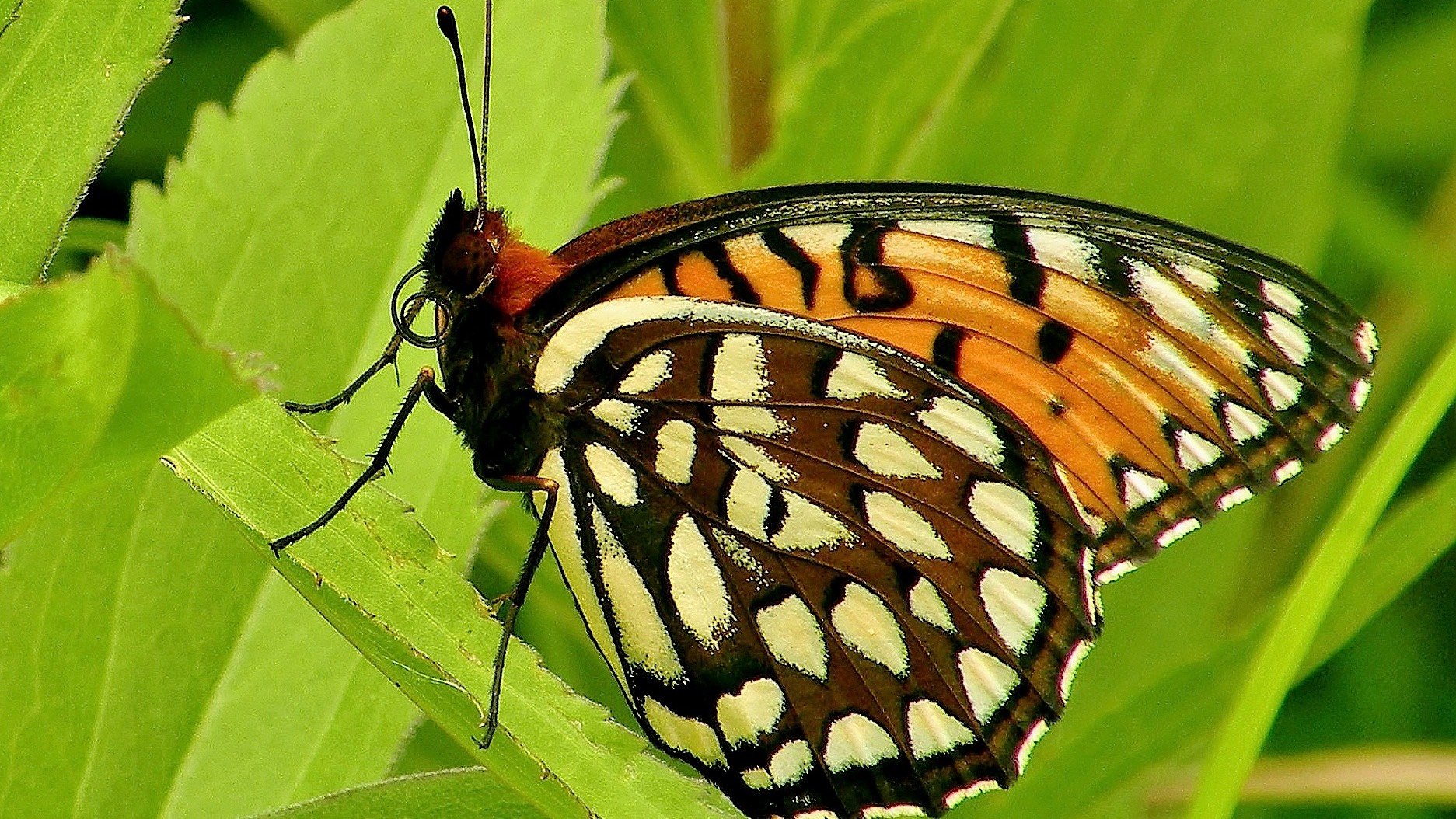 Regal fritillary butterfly. (Doug Taron)
Regal fritillary butterfly. (Doug Taron)
Loss of habitat may be the greatest obstacle to the regal’s recovery, but it’s not the only hindrance facing conservationists in their efforts to save the butterfly.
For one thing, regal caterpillars happen to be picky eaters, dining exclusively on violets, and that diet is part of the problem.
In areas undergoing prairie restoration, as opposed to intact prairie remnants, it’s been a challenge to get violets to grow as part of the prairie plant mix, Taron said, mainly because it’s hard to gather violet seeds.
“If you think of violets, they’re lower plants. By the time the seed is ripe, they’re buried in much taller prairie vegetation. And the seed capsules don’t stay on the plants very well,” he explained.
A number of prairie sites in the western and southwestern suburbs have potential for the regal, but it will only happen if conservationists get better at restoring violets. “That is the main technical hang-up at this point,” Taron said.
(And no, asking gardeners to plant violets, as they’ve planted milkweed for monarchs, won’t help, Taron said. See above regarding “large expanses.”)
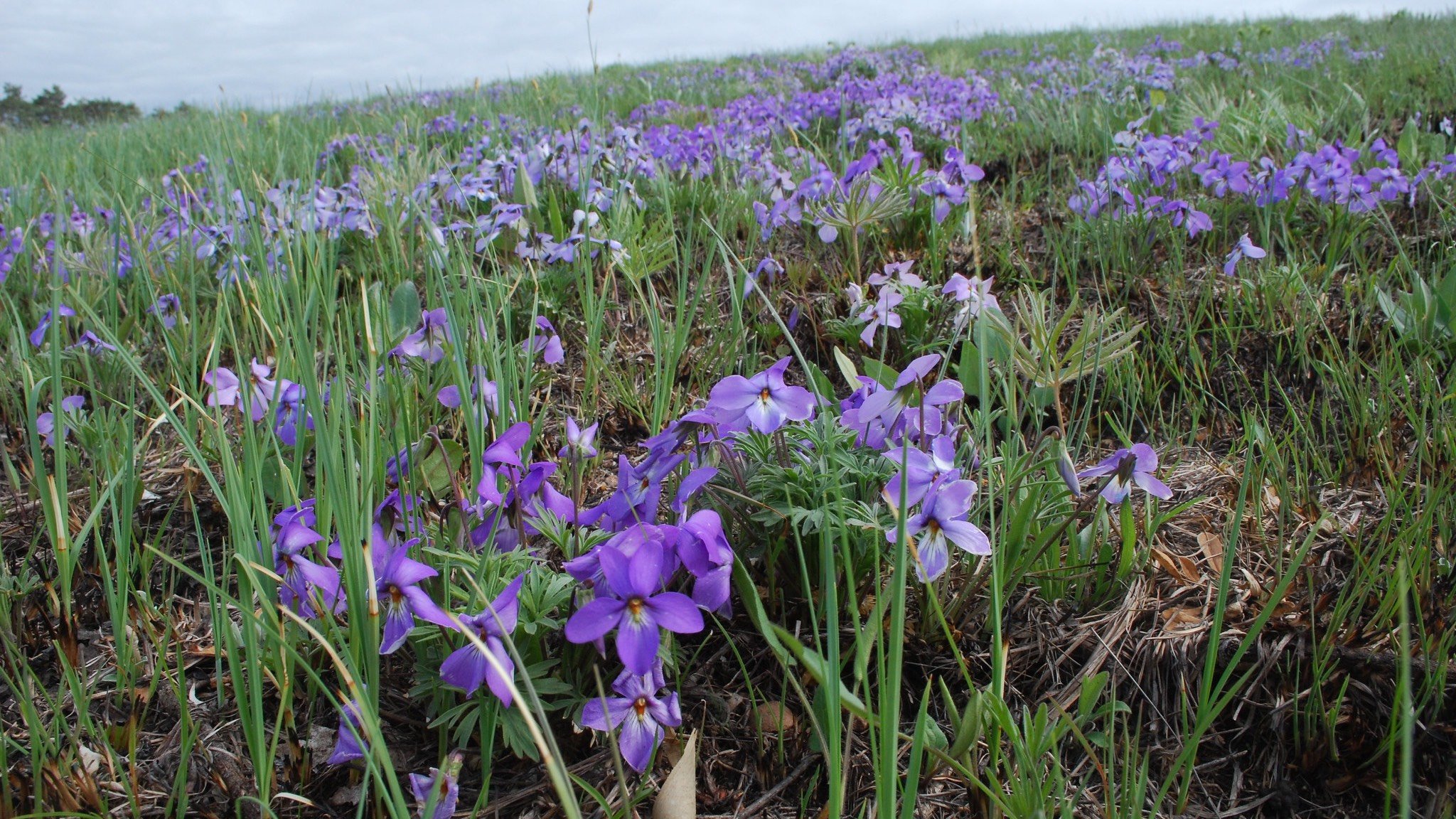 Birdfoot violet, growing on a Wisconsin prairie. (Joshua Mayer / Flickr)
Birdfoot violet, growing on a Wisconsin prairie. (Joshua Mayer / Flickr)
Efforts to breed the regal in a laboratory setting have been stymied, as well, due to a quirk of the butterfly’s lifecycle.
Female regals lay their eggs in late August, and the eggs hatch in mid-to-late September. The caterpillars eat their egg shell and then immediately go into hibernation.
“So you’ve got this tiny caterpillar that’s maybe a millimeter or two long, that’s what’s going to spend the winter,” said Taron. “Getting those caterpillars through the winter has been a large technical hurdle for us. We are not having sufficiently consistent success with getting the caterpillars through the winter.”
The good news, he said, is that nature is possibly finding a way where science has failed.
A native species of violet, called Johnny jump-up (aka, wild pansy or field pansy), seems to have taken hold in a series of sand prairie restorations called the Kankakee Sands, along the Kankakee River in Illinois and extending into Indiana.
“There is some evidence over the last few years that the regal fritillary is actually able to move around and follow that expansion. So the species is showing a little bit of signs of recovery there, which is very encouraging,” Taron said.
For those who wonder why the regal is worth the trouble, Taron has a ready answer.
“I get asked this question a lot, and I think it in some ways goes along with in general the fact that our culture devalues insects,” said Taron. “Nobody really asks to justify the value of something like a tiger when you’re talking about tiger conservation. All species are part of the natural heritage of the Earth, and the rate at which we are losing species is alarming.”
WHERE TO VISIT PRAIRIE RESTORATIONS AND REMNANTS (AND MAYBE SPOT A REGAL FRITILLARY)
Kankakee Sands: There’s the 555-acre preserve in Will County, and another 8,400 acres of prairies and wetlands, owned and managed by the Indiana chapter of The Nature Conservancy.
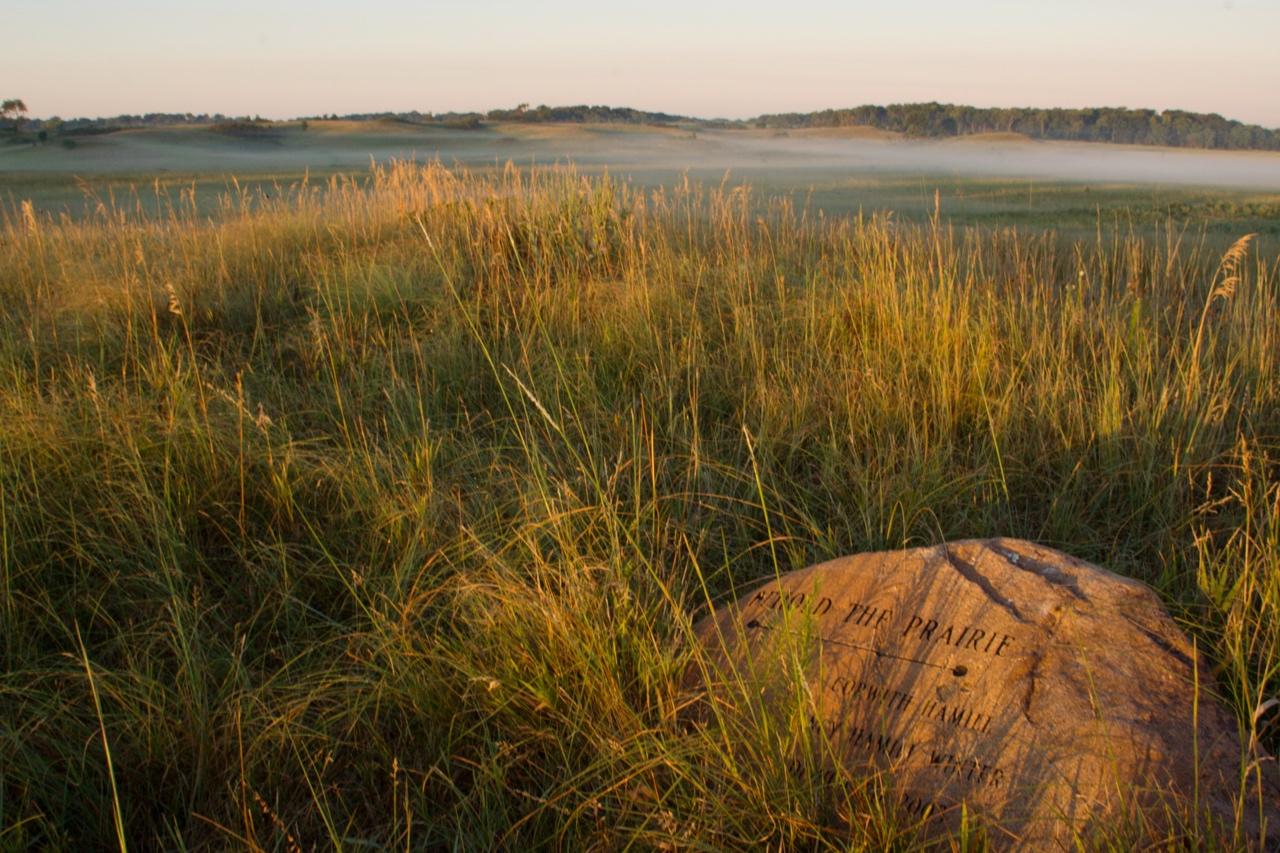 Nachusa Grassland, in Illinois. (Justin Meissen / Flickr)
Nachusa Grasslands: The 3,800-acre preserve in Franklin Grove, Illinois, consists of large remnant prairie, woodlands and wetlands. Bison returned in 2014 and the grasslands are also home to the state’s largest populations of federally threatened prairie bush clover.
Nachusa Grassland, in Illinois. (Justin Meissen / Flickr)
Nachusa Grasslands: The 3,800-acre preserve in Franklin Grove, Illinois, consists of large remnant prairie, woodlands and wetlands. Bison returned in 2014 and the grasslands are also home to the state’s largest populations of federally threatened prairie bush clover.
Indian Boundary Prairies: A cluster of prairie remnants just south of Chicago, comprising the largest remaining example of high-quality grassland in Illinois. Named a National Natural Landmark by the U.S. Department of the Interior. The individual prairies sites are Gensberg-Markham Prairie, Sundrop, Paintbrush and Dropseed. Acquired and managed by the Nature Conservancy, the Natural Land Institute and Northeastern Illinois University.
Contact Patty Wetli: @pattywetli | (773) 509-5623 | [email protected]

